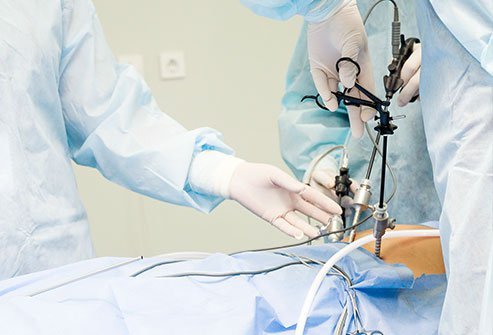What Is Complicated Operative Laparoscopy?

Operative laparoscopy involves the use of a long tube-like camera (laparoscope) that is inserted in your abdomen to treat medical conditions involving the abdomen or pelvis. A complicated operative laparoscopy refers to the extensive types of operative laparoscopy surgeries that involve a higher risk of complications. They include surgeries like laparoscopic hysterectomy (removal of the uterus), laparoscopic cholecystectomy (removal of the gallbladder), and laparoscopic salpingectomy (removal of the fallopian tubes). Though a laparoscopic surgery generally carries minimal risks as compared to open surgery.
Minor complications:
These can often be treated through proper wound care and medications.
Major (or serious complications):
Further surgery is needed to fix many of these serious complications, which include:
- Damage to the surrounding organs, such as the stomach, bowel, bladder, or ureter
- Injury to the nearby blood vessels (particularly artery)
- Air embolism (gas bubbles entering your veins or arteries)
- Allergic reaction to the general anesthetic medication
- Deep vein thrombosis or DVT (a blood clot that gets lodged in the deep veins, particularly of the leg)
- Pulmonary embolism (a blood clot that migrates to the blood vessels supplying the lungs)
The following operative laparoscopic procedures usually carry a higher risk of complications:
- Laparoscopic cholecystectomy (removal of gall bladder)
- Laparoscopic antireflux surgery (fixing the backflow of acid from the stomach into the food pipe)
- Laparoscopic inguinal hernia repair (repair of protrusion of tissues, such as the intestine from the weak abdominal muscles)
- Laparoscopic appendectomy (removal of the appendix)
- Laparoscopic colectomy (removal of a part of or whole of the large intestine)
Sometimes, while performing the operative laparoscopy, the doctor may convert it into an open surgery due to difficulty in accessing the required internal structures/organs. Your doctor will discuss such a possibility with you before the surgery and take your written consent accordingly.
What are the advantages of operative laparoscopy?
Open surgery, also known as laparotomy, involves making a large incision of about 6-12 inches over your abdomen. As the surgical wound is large, the hospital stay becomes longer after the surgery. Technology has advanced so much that most of the operations can be performed through laparoscopy.
Operative laparoscopy has become popular due to its advantages over open surgery. These advantages include:
- The option of getting it done as an outpatient procedure
- Lower chances of infection and complications
- Shorter hospital stays (during the hospital admission as an inpatient)
- Minimal scars at the surgical site
- Less pain after the surgery
- Faster recovery (earlier return to routine activities)
- Less risk of adhesion (bands of tissue in between organs) formation
What are the conditions for which operative laparoscopy can be used?
Laparoscopic surgery can be used for a variety of conditions, including:
- Removing the appendix in case of appendicitis (inflammation of the appendix)
- Removing the gallbladder (often used to treat gallstones)
- Removing a part of the intestine (to treat bowel conditions, such as Crohn's disease or diverticulitis)
- Repairing hernias
- Removing the embryo from the fallopian tube (to treat ectopic pregnancy)
- Removing uterine fibroid or myoma
- Removing the uterus (hysterectomy)
- Surgical treatment of bleeding stomach ulcers
- Performing bariatric surgery (weight loss surgery)
- Removing some section or the whole organ affected by cancer, such as the
How is an operative laparoscopy performed?
Depending on your health status and the condition for which the operative laparoscopy is planned, you may be admitted a night before the surgery or on the same day of the surgery.
The doctor usually gives you general anesthesia that makes you sleep throughout the surgery. This is to make you pain-free during the entire surgery.
The doctor cleans the surgical site and makes several, tiny incisions (each measuring less than half an inch). Next, they insert the laparoscope into one of the incisions. Carbon dioxide gas is also pumped through one of the incisions to expand the area for a better view and surgical access. The laparoscope acts like a camera and helps the doctor visualize the internal structures of your abdomen through the images on a small screen. The surgical instruments are inserted through the other incisions and the required surgical procedure is performed.
Next, the gas is removed from your abdomen. The surgical wound is either stapled or sutured followed by the wound dressing.
The doctor will observe you for a few to several hours after the surgery. Depending on your general health condition, you may be discharged on the same day or during the next 1-2 days after the surgery.
